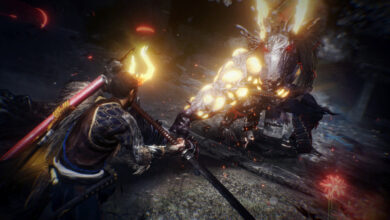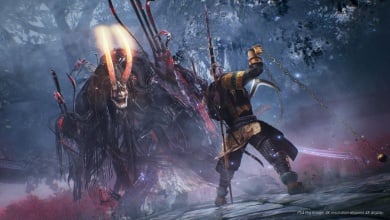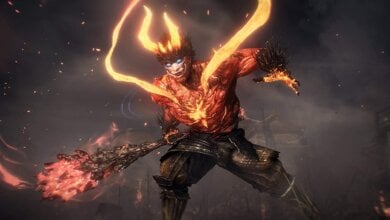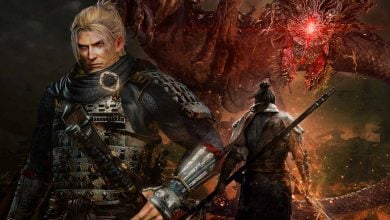Nioh Review
Overall
-
Story And Setting
-
Gameplay
-
Visuals And Performance
Verdict
Although plagued with frustrating loot, uneven story pacing, and repetition, there’s no denying Nioh 1’s combat sets a superb foundation.
Pros
- Engaging Combat Mechanics.
- High Replayability.
- Challenging Combat.
- Intriguing Plot.
Cons
- Irregular Story-telling.
- Frustrating Loot Mechanics.
- Weak Level Design and Enemy Variety.
Ah, the Souls-like genre. Back when FromSoftware came up with Demon’s Souls, they had no way of knowing just how big a deal these iconic mechanics and design choices would become down the line. With Dark Souls bringing it worldwide renown and FromSoftware’s subsequent masterpieces sustaining it, it was only a matter of time before it became an established sub-genre.
- Developer: Team Ninja
- Publisher: Koei Tecmo, Sony Interactive Entertainment
- Release Date: February 7, 2017
- Platforms: PS4, PS5, PC
- Game Length: 36+ hours
- Time Played: 500+ hours
Since it became a universally recognized genre, many have tried replicating FromSoftware’s formula. However, few have managed to close the gap in quality to the magnificent developer, one of which is Team Ninja, well-renowned for its brilliant combat. Team Ninja added an extra layer of fast-paced action on top of the Souls formula and presented Nioh.
Story And Setting
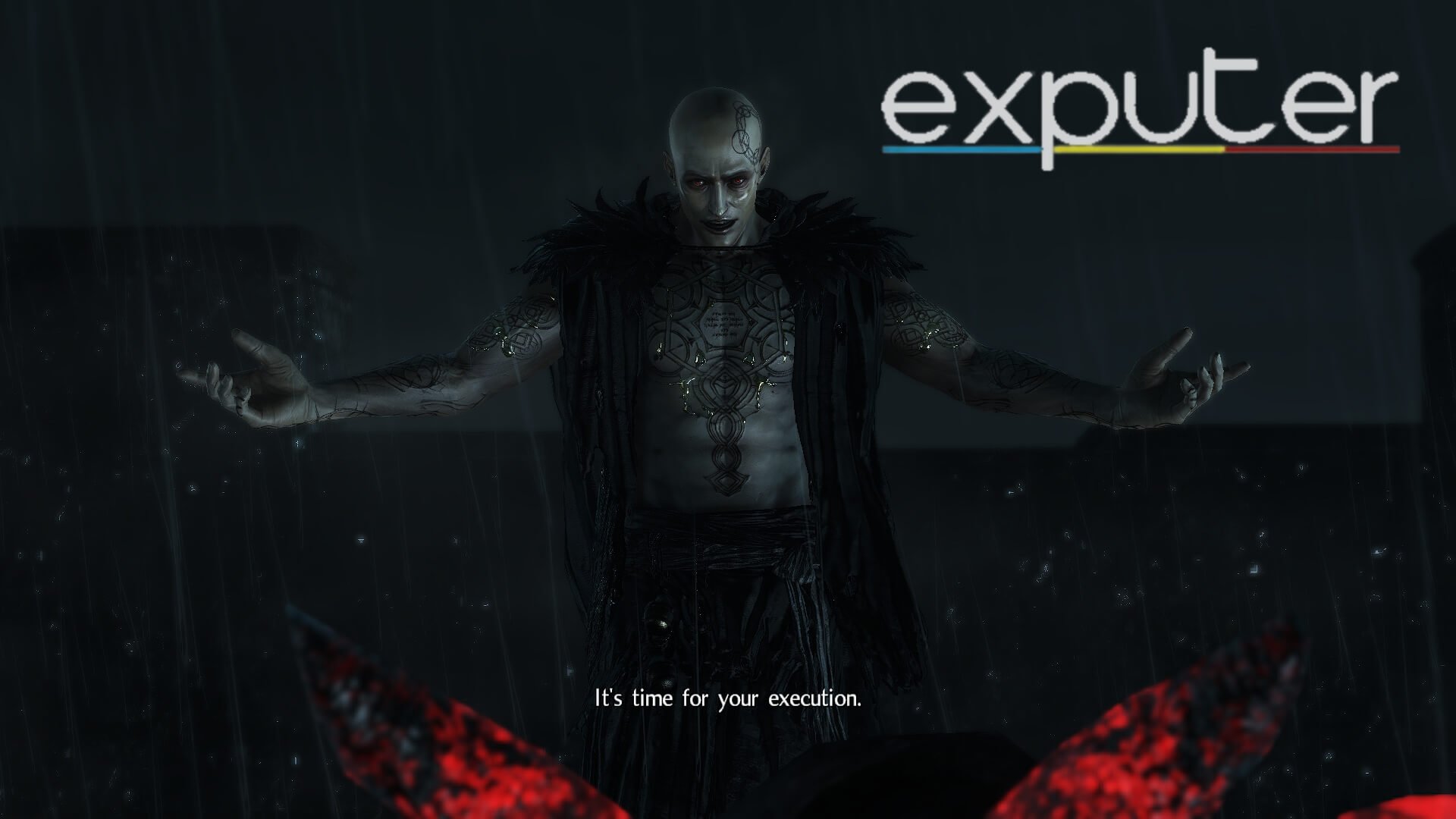
Although the Nioh series is primarily gameplay-centered, there’s a definite story here, one you might even enjoy. It is essentially a retelling of Japan’s history and the involvement of foreign powers during a turbulent time.
William is an Irish explorer who loses his Guardian Spirit, Saoirse (a supernatural entity), to a vicious villain who is after the source of Amrita, a mystical energy. England and Spain conflict, and both sides aim to use this Amrita to wipe the floor with the other. When William follows this mysterious fellow to Japan, he becomes integral to a new set of politics.
William’s development and knowledge of what’s going on are surprisingly lackluster. It sours an otherwise enjoyable story.
Set in the late Sengoku period, Tokugawa Ieyasu suffers internal conflicts and strife thanks to a yokai infestation, worsened by the involvement of these two foreign forces using Amrita to create zombies and wreak havoc. Amidst all this, William is set on his quest to reclaim his Guardian Spirit and aims to help out the Japanese in this time of crisis.
An Interesting Plot Hindered By Weak Storytelling and Characters
All that explanation might now have done the game’s plot justice, so I’ll just say this: Nioh’s story is plenty interesting for both newcomers and history enthusiasts. It blends history with fiction and then delivers meaningful concepts of wars, conspiracies, vengeance, and not caring about the means to achieve an end. William is at the center of all this unraveling, and it’s a blast to be a part of it.
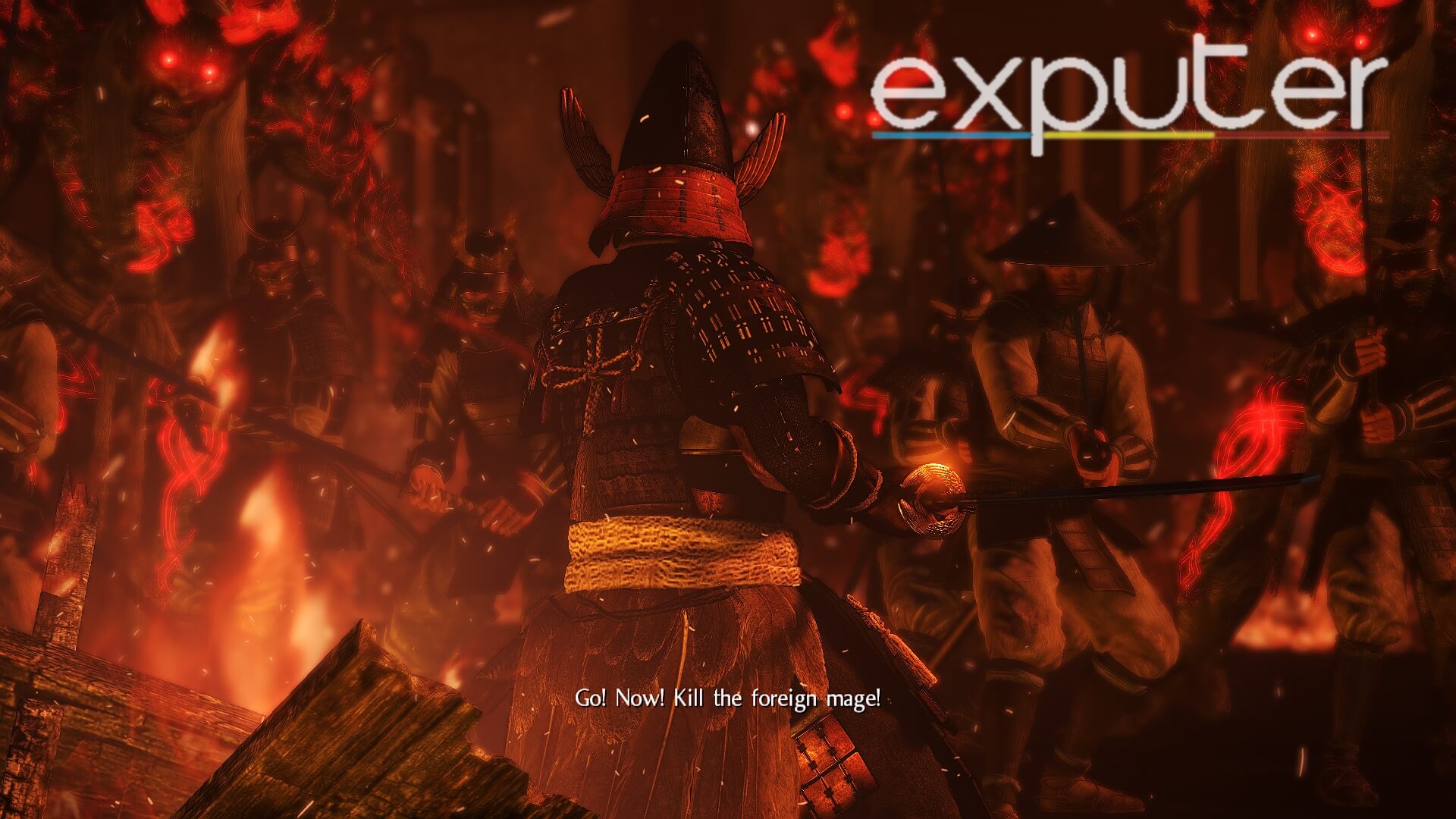
Unfortunately, I’m pretty sure you won’t understand any of it unless you do a bit of research. The game’s storytelling is highly irregular and leaves a lot to be desired. On top of that, the protagonist’s characterization is quite bland. William’s development and knowledge of what’s going on are surprisingly lackluster. It sours an otherwise enjoyable story.
Gameplay
Now for the spicy part. Team Ninja’s mastery of combat is no secret. And once again, Nioh upholds that. A brilliant, fast-paced action combat mixed perfectly with the design choices of a Souls-like. Your basic gameplay loop involves normal and heavy attacks, a block and dodges to avoid attacks, and a stamina bar that governs all these actions.
Nioh’s challenging encounters and the steep learning curve of all the stances and abilities at your disposal are its biggest plus points.
Let’s talk weapon variety first. You have Swords, Dual Swords, Spears, Axes, Kusarigamas, Odachis, and Tonfas. That’s not all; the game provides three ranged options: Bows, Rifles, and Handguns. All this means you never run out of new things to try especially since the game comes with three different stances.
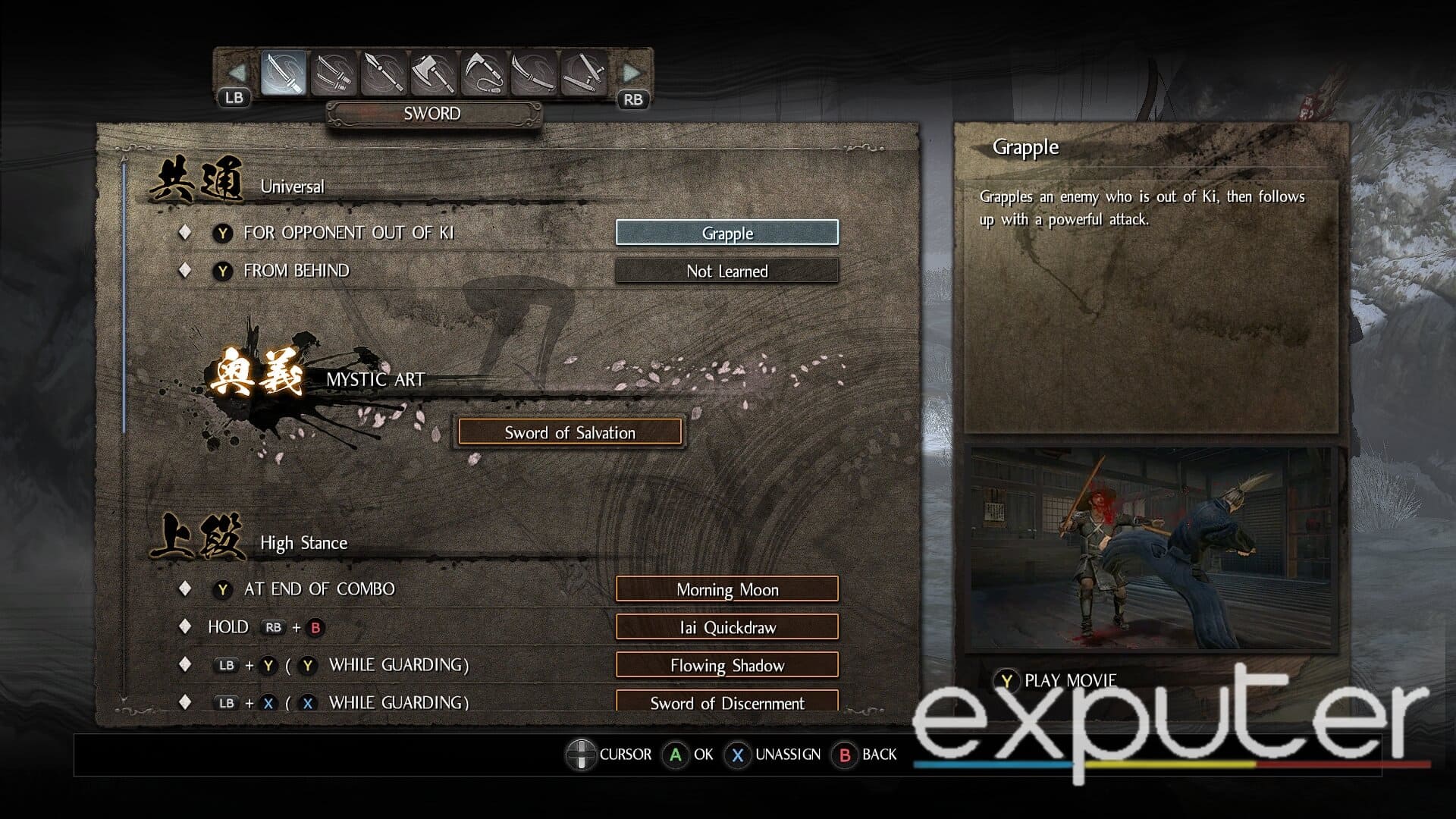
Learning stance shifts, and the timing is both fun and rewarding. Another important thing to learn is the Ki Pulse mechanic, which lets you recover some of your stamina with a timed button press and cleanse the stamina-draining “Yokai realms.” I can’t count how many times Ki Pulse rescued me in tight situations.
Moreover, the game incorporates the Yokai and supernatural aspects in the form of Guardian Spirits. These entities provide you with specific buffs and an “Ultimate Attack” called Living Weapons. If you ask me, this move was way too broken and ruins the tension you enjoy in a game like this.

The Mechanical Variety Is Both Enjoyable And A Bit Too Much
Now, let me express some of my thoughts. I have no doubt in my mind that Nioh’s core combat system is one of the best around, but there are still some flaws hidden underneath, one of which is the overwhelming nature of some of its design choices.
The weapons, their stances, and the three skill trees (melee, ranged, magic) all add a ton of replayability and depth to this splendid combat system. This mechanic variety is what separates Nioh from a typical Souls-like; it makes it a lot more than that. However, I can’t say the same about the overly micromanaged loot system.
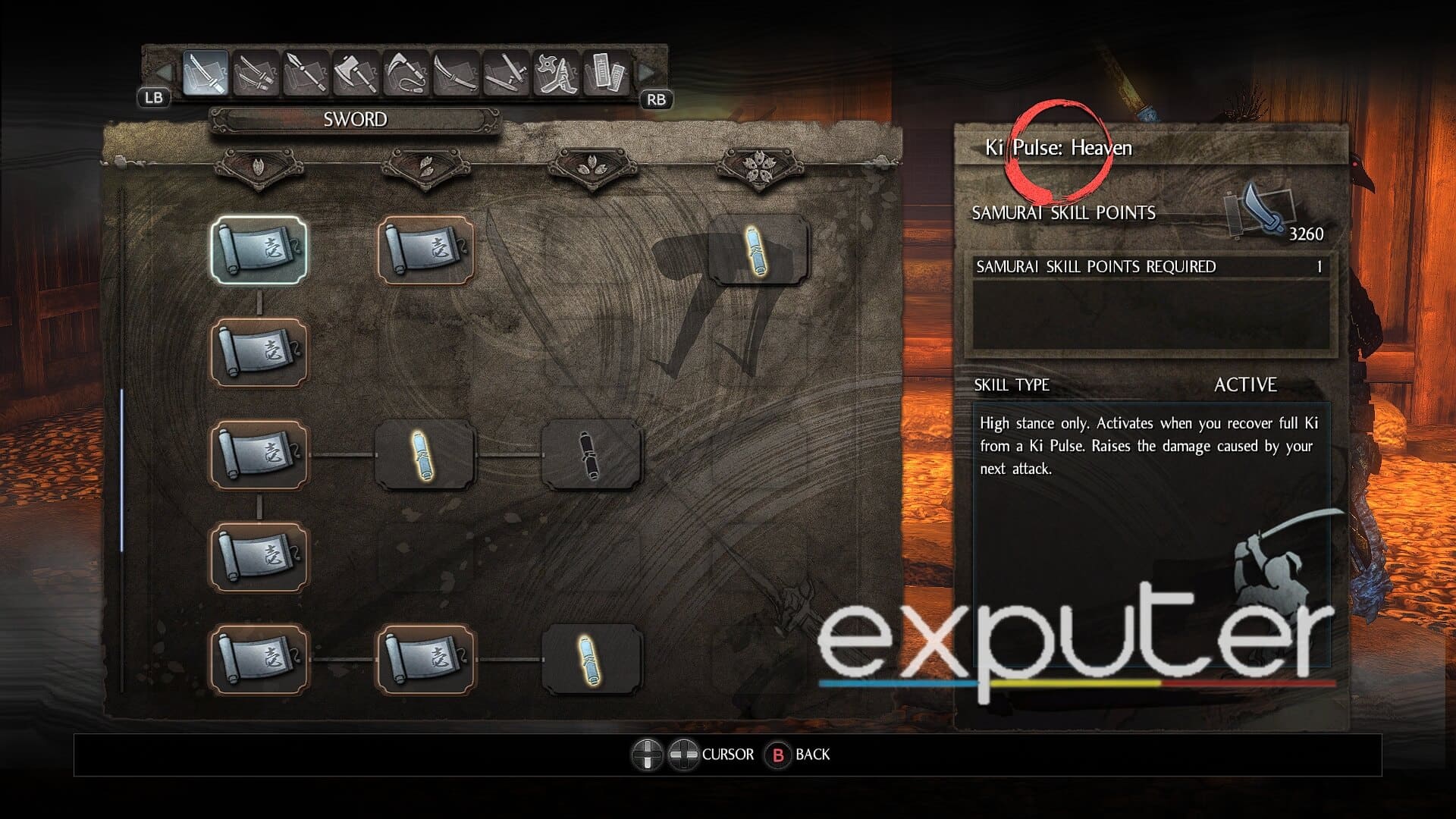
It’s simultaneously the game’s most interesting and the most frustrating feature. Getting a very high rarity drop for a massive stat boost is an extreme adrenaline rush, not knowing that’s hell you’re walking into. Nioh has so many micro stats and buff values that there’s no way to keep up with all that; the RNG is nothing but suffering.
This just gets worse in subsequent NG+ cycles, when you unlock higher rarity loot and even more stats, many of which aren’t even necessary. Like the Focus Levels beyond the level cap of 750. What even is the purpose of these meager boosts other than overly confusing things?
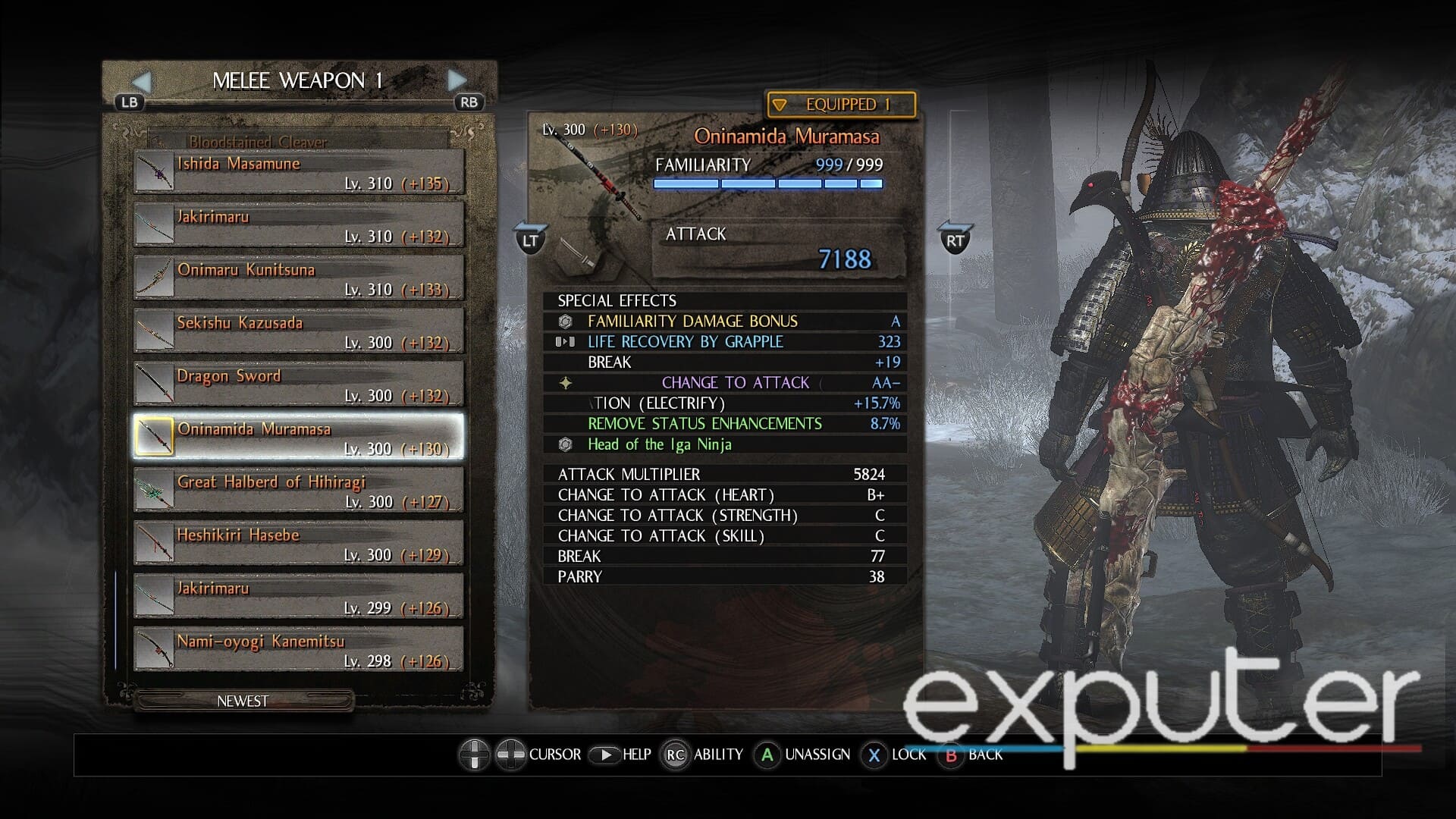
Level Design And Enemy Variety Could’ve Been Better
I’ve talked about the mechanics, so now let’s discuss what you’re up against. The game employs multiple enemy types, each having a unique moveset and a different kind of pain to deal with. I actually mean that in a good way; Nioh’s challenging encounters and the steep learning curve of all the stances and abilities at your disposal are its biggest plus points.
Don’t get me wrong, I enjoy a fair challenge as much as the next guy, but the bosses in Nioh gave me too much trouble. Their attacks are crazy fast and little telegraphed, deal a ton of damage, and there isn’t much room to counterattack. There’s of course the thrill of overcoming them, but not before you genuinely criticize some of the devs’ choices.
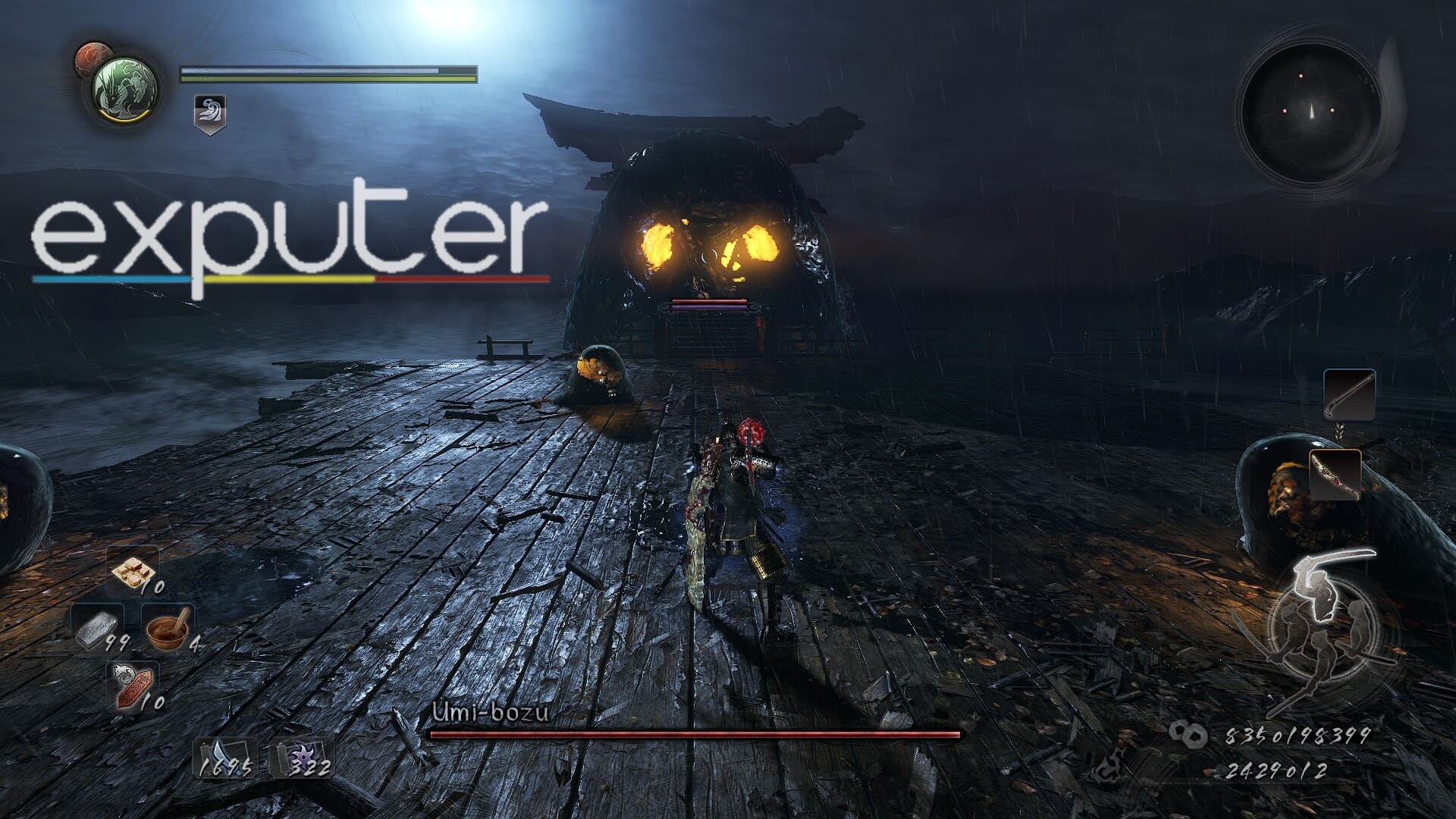
There’s one last thing I’d like to complain about here, which is the level design and enemy variety. Distinct enemy types are fun, but the game runs out of them faster than you can blink, leaving you with a void. The game has a ton of stuff you can experiment with, but with the enemy variety pretty thin, repetitiveness seeps in sooner or later.
Nioh has so many micro stats and buff values that there’s no way to keep up with all that; the RNG is nothing but suffering.
Many levels are the same vast maps with meaninglessly convoluted and twisted pathways and bland routes filled with the same traps and ambush tropes you get tired of. Couple that with a high frequency of gank fights, and you’ll see why I find this aspect frustrating.
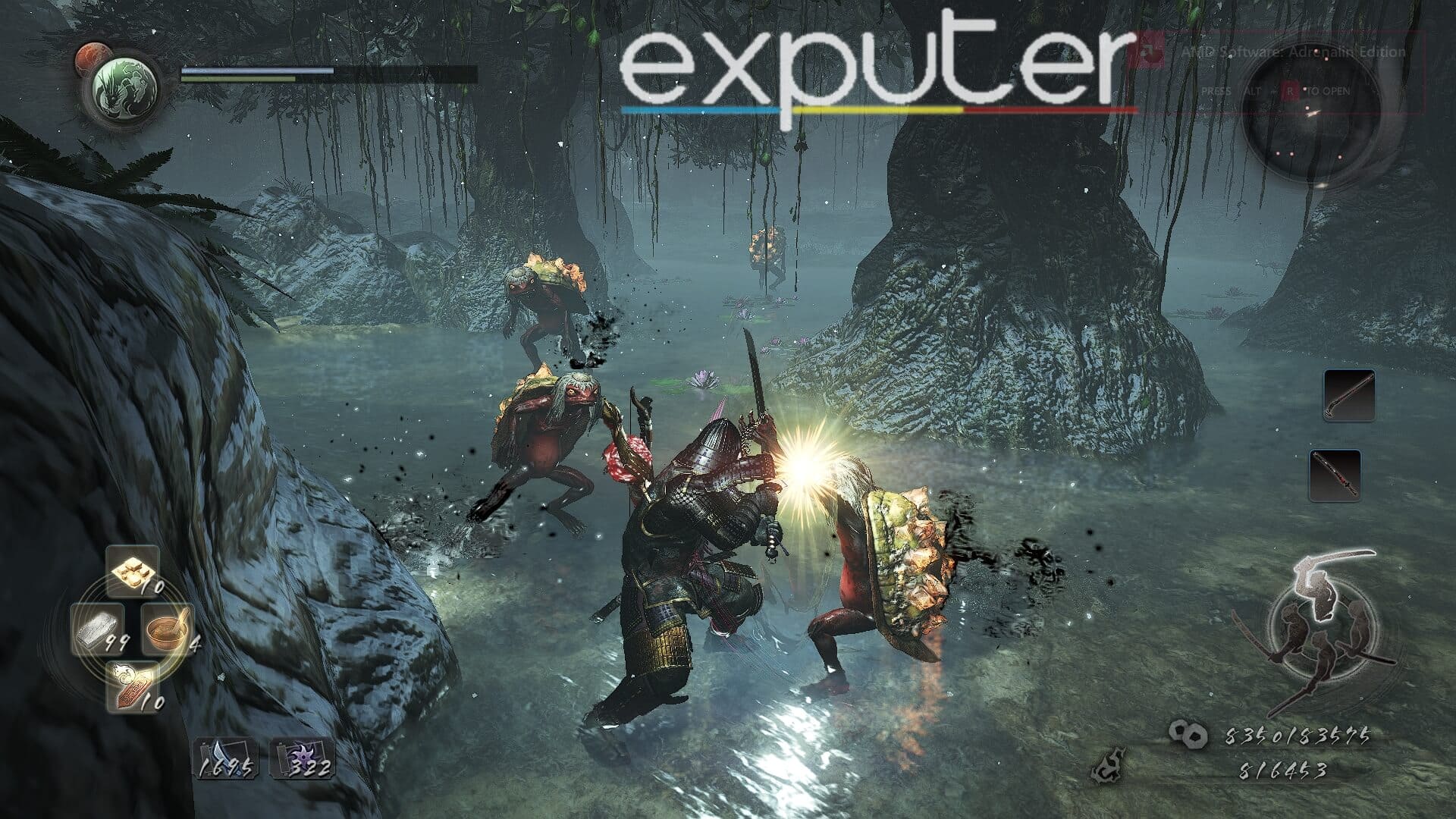
Visuals And Performance
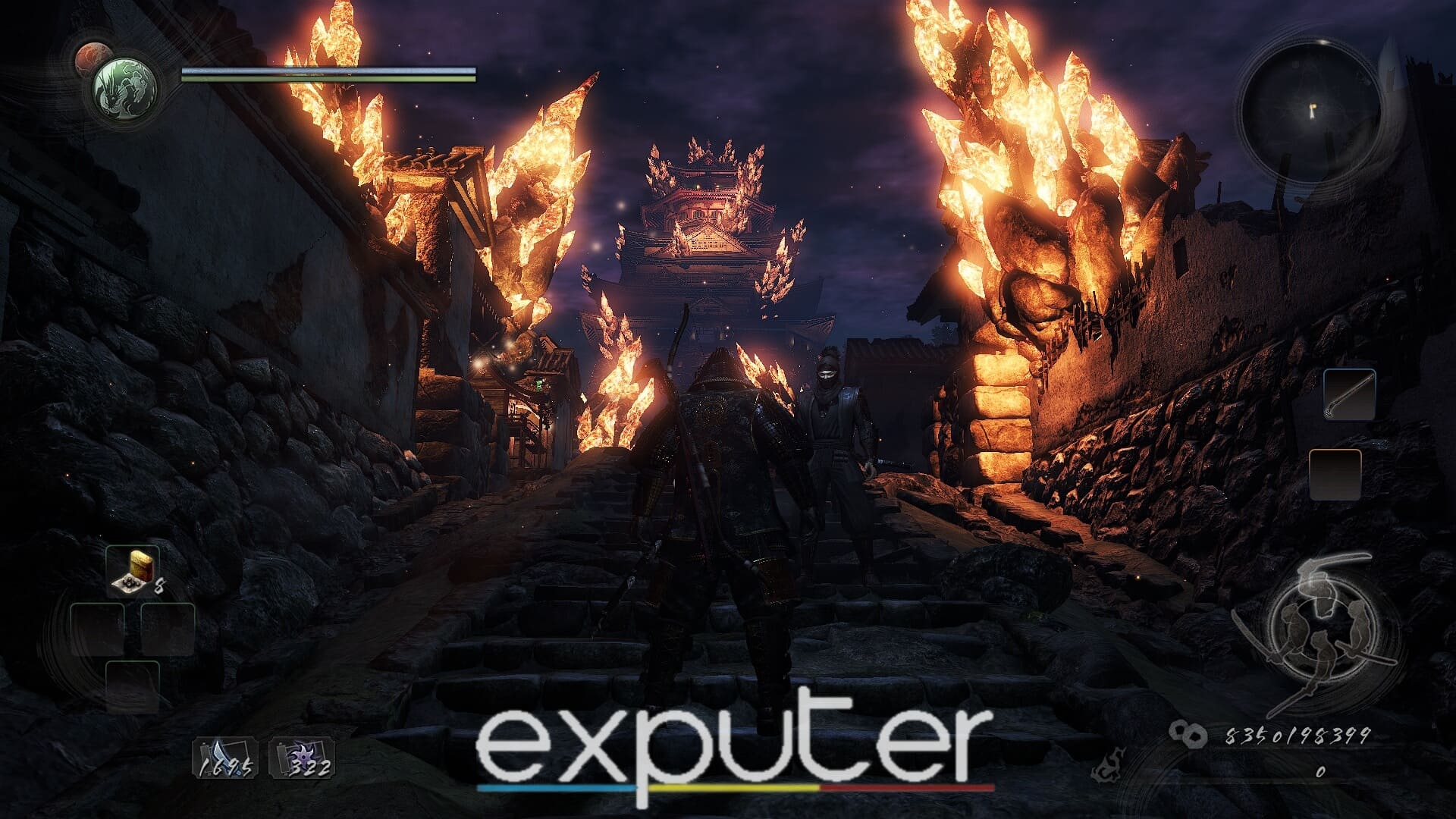
Before I discuss the visuals, I should let you know—if you play Team Ninja’s games frequently, you must know that they have always suffered from dated and backward visuals. The same applies here as well. Nioh is not too big on crisp and mind-blowing visuals but instead goes all in on the gameplay mechanics and just enough visual quality to keep it all afloat.
From its gloomy dungeons to decrepit Japanese towns and worn-down buildings, the models may look dated, but never hideous. The visual presentation, including the design of the many Yokai bosses and humanoid enemies, complements the game’s backdrop of supernatural threats in a historic setting perfectly.
Nioh is not too big on crisp and mind-blowing visuals but instead goes all in on the gameplay mechanics and just enough visual quality to keep it all afloat.
As for the performance, I don’t think I suffered from any significant problems throughout my gameplay. Nioh is not particularly taxing and thus runs great even on a low-end PC. The only problem with the PC port is the ridiculous control scheme.
Verdict
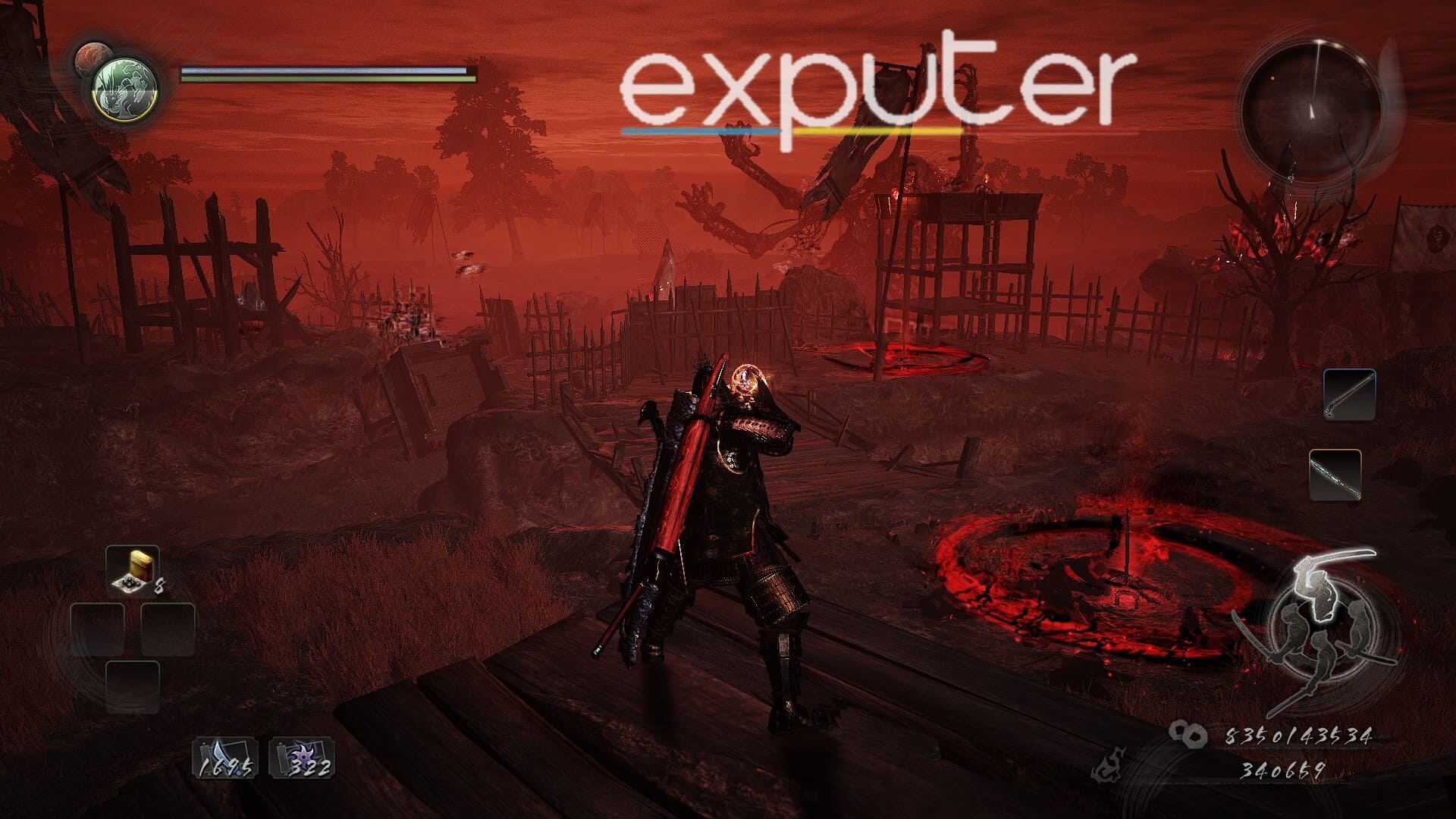
All in all, Nioh 1 is a splendid entry to Team Ninja’s repertoire of games with magnificent games, and the subsequent, more refined Nioh 2 would never have been possible without it. Although plagued with frustrating loot, uneven story pacing, and design repetition, there’s no denying Nioh 1’s combat sets a superb foundation.
That was all about my Nioh 1. If you enjoyed reading through it, might I suggest looking through some more of our reviews?
- Nioh 2
- Wo Long: Fallen Dynasty
- Rise of the Ronin
- Ninja Gaiden: Master Collection
- Sekiro: Shadows Die Twice
Thanks! Do share your feedback with us. ⚡
How can we make this post better? Your help would be appreciated. ✍
